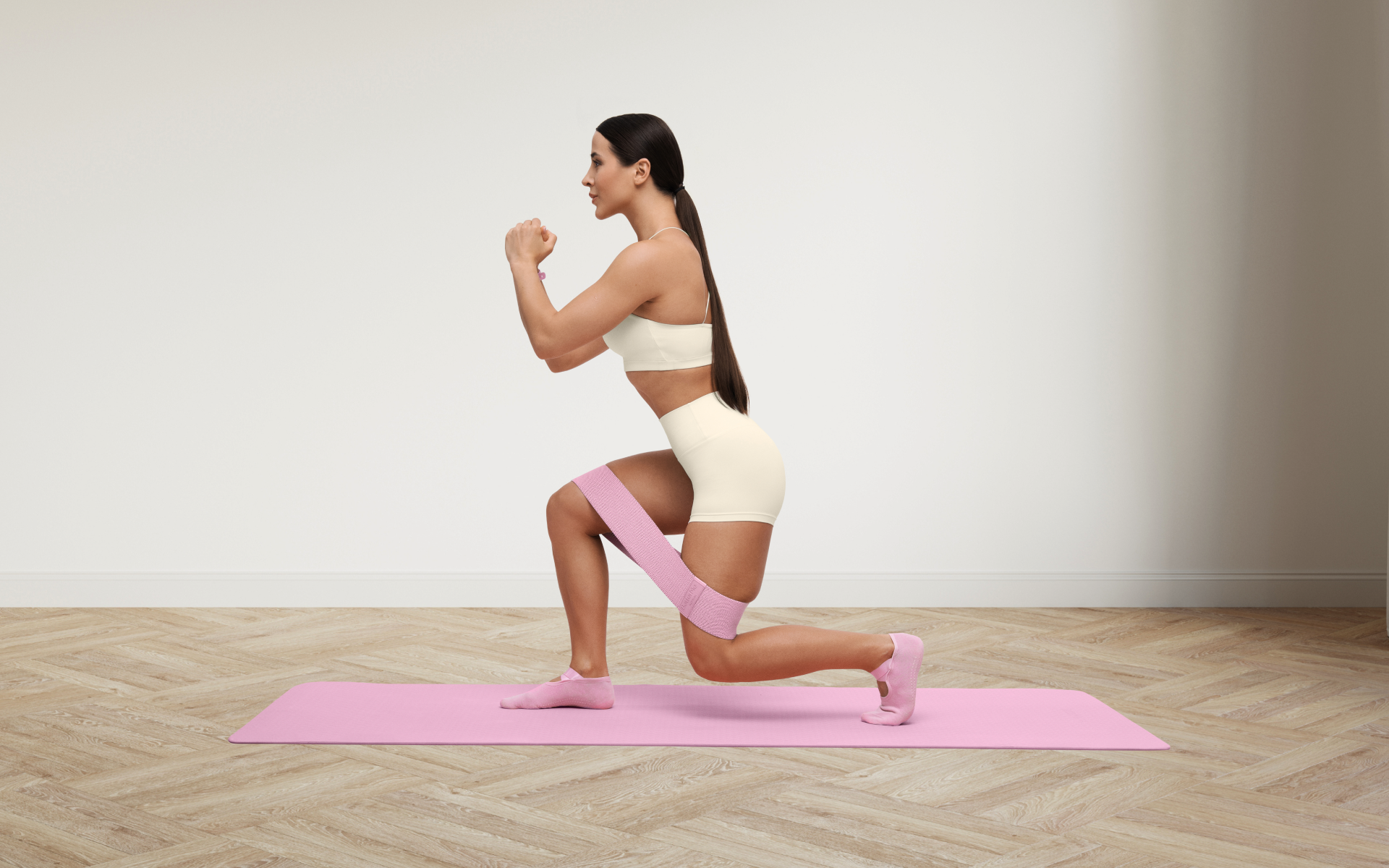Have you ever considered switching your normal race training plan for something more adventurous? Maybe try something more challenging that will push your endurance to the next level? If so, then a trail running training plan could be the thing for you. Unlike normal running on roads, pavements, or asphalt, trail running takes you out into the wilder parts of your neighbourhood, places which not only allow you to enjoy nature but also add some challenging aspects to your routine. Read on to find out what trail running is and how it could potentially benefit you.
Get your personalized
meal plan!
What Is Trail Running?
According to the Cambridge Dictionary, trail running is a sporting activity that involves running along trails or paths through a countryside, mountain, or forest area (8).
Trail Running Training Plan For Beginners – Tips And An Essential Guide
Trail running is quite unlike any other type of common running sports/races, which means that the tips and essentials might differ slightly. Here is what you need to know and have while train running
The right shoes – Trail running shoes are not the same as regular running shoes. Unlike the later, they are specifically made thicker to emphasize on traction, foot protection and stability.
Pay attention to your feet – You cannot zone out as you might, running on paved surfaces, especially in the beginning or while using a new trail. Unlike flat surfaces, trails are often full of rocks, slippery areas, twigs, branches, roots and other things that can easily trip you so you much always pay attention to where your feet are going
Cross training – This is an important part of any runner’s life. However, when it comes to trail runners, you must ensure to do foot and ankle strengthening exercises to help you stay safe on uneven terrain.
Water – Chances are that you will not find any clean water in the wilderness. To avoid dehydration or drinking from suspicious streams, invest in a hydration vest or pack and always take it with you.
- Safety and navigation tools – Trail running can be quite dangerous, especially for women. To minimize chances of any mishaps:
- always plan your route ahead
- run with a partner (or share your trip/route with someone close to you)
- have a map and compass – not all trails are located in places with cell service
- carry some painkillers, Band-Aids, and a snack
- keep an eye out for wildlife
- dress according to the weather
- above all else, beware of your surroundings – do not use both earbuds if listening to music
Read More: Trail Running Vs. Road Running: Which Of The Two Is The OG Running Routine?
How To Train For A Half Marathon: Trail Running Vs. Road Running Which Is Better?
As defined at the beginning of this article, trail running is basically running on natural terrain away from paved roads. On the other hand, road running is defined as running on a measured course over an established road and/or smooth pavement. Let’s examine the pros of each form of running to determine which would work best for a half marathon training plan.
The Pros Of A Road Running Half-Marathon Training Plan
- Accessibility – Most people who train for half-marathons (or any other long distance running sport) tend to do it via road running since it’s the most familiar and accessible of the two, especially if you live in an urban area. If you live in a large town or city, chances are that there is a road or pavement right outside your door which makes road running as easy as just putting on your shoes and stepping outside. You do not have to drive around looking for a park or hills to find a trail.
- Convenience – As stated in the point above, road running is very accessible which makes it convenient for almost anyone looking to try it out. Also the fact that you are running on an actual road means that you do not have to go through the hassle of planning out a route – just follow the road to and back.
- Safety – Unlike trail running which mostly leads you through unexplored and isolated places, road running is mostly done in well populated and well-lit areas which are much safer. Running in well populated and well-lit areas also means that you are more likely to find shelter, protection, and help in case anything bad happens to you as you are out training.
- Cost effective especially in relation to your shoes. Trail running takes you through all kinds of terrain where you might come across sharp rocks, random pools of water, muddy areas (especially during the rainy season), and other rugged terrain. Road running on the other hand is a much cleaner sport meaning that your shoes will remain cleaner for longer and you do not have to replace them as much.
- Less chances of falling – Because you are training on a flat surface and not jumping over pools of water, jumping over rocks, fallen trees and branches or braving sliding over muddy patches.
- It’s better for your pacing – According to Runner’s World, pacing is very important for marathon runners. Being aware of how fast you run helps you stay out longer and complete your run without any disastrous physiological effects. Trainingpeaks.com stresses that, to develop the proper marathon pacing, the majority of your training should be executed on the same surfaces and similar terrain as that of the target competition. Because most half marathons are done on roads, then road running would be better suited for your half marathon training.
The Pros Of Using A Trail Running Training Plan For A Half Marathon
Just because trail running increases your risk of falling doesn’t mean that you should not consider using trail running to train for your upcoming half-marathon race. Here are some benefits of trail running that could help change your mind:
- It’s safer for your joints – As stated above, road running is done on man-made surfaces such as asphalt or concrete which are quite hard. On the other hand trails are more natural, softer surfaces, consisting of the ground, soil, mud and grass. These softer surfaces allow for less pounding on your joints like the ankles and knees which keeps them safer and pain-free.
- Can improve your balance – Trails, especially those not often used by runners or hikers are often filled with obstacles in the form of rock, twigs, roots, and other debris, which means that your balance must be great to ensure that you do not trip – and even if you trip, you do not end up falling over and hurting yourself. The more you run over these obstacles, the more your balance will improve. Please note that trail running shoes are also specifically made to help with stability and balance.
- It puts you closer to nature – Unlike with road running, train running takes you away from the busy city life and city roads where it lets you enjoy nature in its truest and most beautiful form. Being outside in nature has been shown to help generate a multitude of positive emotions, such as calmness, joy, creativity and can facilitate concentration. Research has also shown that nature has incredible benefits to your mental health especially for anyone suffering from stress, anxiety and depression (4, 7, 6).
- Boosts your endurance – Completing a half marathon is no easy feat and requires a lot of endurance. Trails, unlike roads, are very uneven and are full of obstacles which not only challenge your mental focus and balance, but also your overall physical endurance due to the uneven and unpredictable terrain. Choosing a half marathon training plan train running schedule will give you an edge over other runners in the race.
- It’s safe – If your trail route of choice is a well-known one then you might actually be safer than someone training on the road. For most people, running can be a form of meditation that helps them empty their minds and just exercise. Emptying your mind while on a road, especially a busy one is the perfect recipe for disaster as you could easily be in or the cause of a road accident. Seeing as there are no cars on trails, you are quite safe to let your mind drift and meditate.
- It’s a more effective and challenging lower body workout than road running – If you want to boost the endurance and strength of the muscles in your body then a trail running training plan is your best bet thanks to the obstacles, uneven surface and varied terrain. Trail runners are also known to have a more muscular physique as opposed to road runners who are often leaner.
So which plan is better for your half marathon training plan: road running or train running? We would say a combination of both. As seen above, each plan has pros that could help you achieve an end goal or not for only running but also successfully completing your half-marathon.
BetterMe app will kick you out of the mental funk, shake off your extra weight, rid you off your energy-zapping habits, and help you sculpt the body of your dreams. Intrigued? Hurry up and change your life for the better!
How To Train For A 10k Trail Race
Excluding sprints, a 10K run is one of the two short distance races that many runners participate in before jumping into a half or full marathon (the other short distance race is a 5K). While many 10K races are done on the road (i.e. road running) trail lovers can participate in lesser known 10K trail races.
If you have been trail running for a while now, or you are a nature lover and would like to participate in such a race, here is a beginner friendly 10K trail running training plan to get you ready for race day.
Simple Beginner-Friendly 8-Week 10k Trail Race Training Plan
Some quick facts to note about some terms used in the following 10K training plan
Easy run – Running at a slow jog or pace that allows you to speak full sentences without losing your breath. You are also able to breathe easily through your nose. The sprints mentioned below should be done every 5 minutes.
Moderate pace – You can only comfortably speak in short sentences. During this pace, you can control your breathing but any faster and you would begin to strain
Tempo run – This is meant to help with speed-building workout which, in turn, can help you train for a race or become a faster runner overall. The pace setting for this is the fastest pace that can be sustained for one hour in highly fit runners or the fastest pace that can be sustained for 20 minutes in less fit runners.
This pace is said to (10)
- Help you understand how different paces feel which puts you more in tune with your current abilities and limits
- Let your body develop capillary beds which allow the blood to easily transport oxygen and nutrients to your muscles (1)
- Help you build mental fortitude and focus, which is essential in long distance races
Long run – As the name suggests, this is the longest run in your training plan. Long runs should be done at a slow, comfortable pace. They are used to help increase your maximum mileage and overall endurance – meaning you won’t quit halfway come race day.
They also improve your cardiovascular fitness, strengthen bone muscles, and boost mitochondria which is crucial for muscle cell metabolism, energy supply, the regulation of energy-sensitive signaling pathways, reactive oxygen species production/signaling, calcium homeostasis and the regulation of apoptosis (2, 5, 3).
| Week | Monday | Tuesday (speed easy run) | Wednesday | Thursday (hills or tempo) | Friday | Saturday (long run) | Sunday (easy run) |
|---|---|---|---|---|---|---|---|
| 1 | Rest | 30 min + 15 sec sprints | 30 min easy run or CT | Hills 10 min easy 6 x (30 sec hard uphill + 2 min easy recovery) 5 min easy | 35 min easy run or CT | 5 miles | 30 min |
| 2 | Rest | 35 min + 30 sec sprints | 35 min easy run or CT | Tempo 10 min easy 10 min moderate 10 min easy | 35 min easy run or CT | 5.5 miles | 30 min |
| 3 | Rest | 40 min + 45 sec sprints | 35 min easy run or CT | Hills 10 min easy 8 x (30 sec hard uphill + 2 min easy) 5 min easy | 35 min easy run or CT | 6 miles | 30 min |
| 4 | Rest | 35 min +30 sec sprints | 30 min easy run or CT | Tempo 10 min easy 10 min moderate 10 min easy | 30 min easy run or CT | 5 miles | 30 min |
| 5 | Rest | 40 min + 1 min sprints | 40 min easy run or CT | Hills 10 min easy 10 x (30 sec hard uphill + 2 min easy) 5 min easy | 40 min easy run or CT | 6.5 miles | 35 min |
| 6 | Rest | 45 min + 2 min sprints | 40 min easy run or CT | Tempo 10 min easy 15 min moderate 10 min easy | 40 min easy run or CT | 7 miles | 35 min |
| 7 | Rest | 40 min + 2 min sprints | 35 min easy run or CT | Hills 10 mins easy 6 x (30 sec hard uphill + 2 min easy) 5 min easy | 35 min run or CT | 5 miles | 35 min |
| 8 | Rest | 30 min + 15 sec sprints | 30 min easy run or CT | Tempo 10 min easy 10 min moderate 5 min easy | 20 min or CT | 10K race |
Read More: How To Start Trail Running: The Ultimate Guide For Beginners
Sample Of An Intermediate Trail Running Training Plan 25k Schedule
The following training plan is best suited for a half-marathon or a 25k training plan.
| Week | Mon | Tue | Wed | Thu | Fri | Sat | Sun |
|---|---|---|---|---|---|---|---|
| 1 | Rest | 2 | 2 miles easy + 6x30sec moderate pace (90 sec recovery btwn sets) + 2 miles easy | 2 miles easy | Rest | 4 miles | 2 miles easy + 4 sets of 20 sec hill run |
| 2 | Rest | 2 miles easy + 4 sets 30 sec hill run (2 min recovery btw sets) | 4 miles long run | 2 miles easy run | Rest | 5 miles long run | 2 mile easy/Cross Training |
| 3 | Rest | 3 miles easy | 5 miles easy with 8 reps 30 sec fat pace run with 90 sec easy run | 2 miles easy | Rest | 6 miles long run | 4 miles run |
| 4 | Rest | 2 miles easy + 4 sets x29 sec hill run moderate pace | 5 miles easy with eight intervals of 30 seconds fast, one minute easy | 3 miles easy | Rest | 6 miles easy | Cross Training |
| 5 | Rest | 3 miles easy | 6 miles hill run moderate pace | 3 miles easy | Rest | 8 miles long run moderate pace | 4 miles easy + 4x30 sec fast-paced hill run |
| 6 | Rest | 3 miles easy with 4x20sec fast run and 1 easy run | 4 miles easy + 10 set intervals (1 min fast, 1 min easy | 3 miles easy | Rest | 6 miles easy | 4 miles easy with 4x20sec fast & 2 min easy |
| 7 | Rest | 4 miles easy with 4x20sec fast & 2 min easy | 2 miles easy with 8sets intervals (2 min fast, 1 min easy) + 2 miles easy | 3 miles easy | Rest | 8 miles moderate pace | 4 miles easy |
| 8 | Rest | 4 miles easy with 4x20 sec fast run & 1 min easy | 2 miles easy with five sets intervals: 3 min uphill moderate pace, 3 min easy run back down. 2 more miles easy | 4 miles easy | Rest | 10 miles easy | 4 miles easy |
| 9 | Rest | 4 miles easy | 2 miles easy + 20 min fast pace + 2 miles easy | 4 miles easy | Rest | 12 miles easy | 4 miles easy |
| 10 | Rest | 4 miles easy | 4 miles easy | Cross Training | Rest | 8 miles moderate pace | 3 miles easy |
| Race Week | Rest | 3 miles easy | Active rest | 3 miles easy | Rest | 2 miles easy | Half Marathon/25K |
Lean and toned up body isn’t just a far-fetched fantasy. Check out the BetterMe app and watch it propel your weight loss journey into high gear!
FAQs
How Long Does It Take To Train For A Marathon?
The distance covered by a full marathon is 26.2 miles or 42.2 kilometers and it takes anywhere between 16 to 20 weeks to properly train for one.
Is A Train Running Training Plan 50k Schedule Good For A Full Marathon Race Prep?
This might be a little on the excessive side of things. As seen above, a full marathon is 42.2 kilometers long and thus training with a 50K schedule is going above and beyond. However, if you are looking to participate in an ultra marathon (which could range from 50km to almost 5,000km(9)), then this could be the exact game plan you need.
Which Is The Best 35 Km Trail Running Training Plan?
A good trail running training plan should have
- Ample time between the start date and race date
- Rest days – They are important to let your muscles rest, recover, and grow
- Include cross training which give you time to train something other than your lower body during this time
- Should be suited to your abilities and limits i.e., if you are a beginner, please do not choose to train with an intermediate or advance training plan. They’ll be too much for you
The Bottom Line
A train running training plan is a good option for anyone interested in trail races or any person looking to add some variety to their long distance race training plan. The most important thing to remember while trail training is safety because this sport is done in unexplored areas away from people – not being aware of your surroundings can lead to some dangerous consequences.
DISCLAIMER:
This article is intended for general informational purposes only and does not address individual circumstances. It is not a substitute for professional advice or help and should not be relied on to make decisions of any kind. A licensed physician should be consulted for diagnosis and treatment of any medical conditions. Any action you take upon the information presented in this article is strictly at your own risk and responsibility!
SOURCES:
- Capillary Beds: Definition & Functions (n.d., study.com)
- Could mitochondria help athletes to make gains? (2021, nature.com)
- Exercise is mitochondrial medicine for muscle (2019, sciencedirect.com)
- Minimum Time Dose in Nature to Positively Impact the Mental Health of College-Aged Students, and How to Measure It: A Scoping Review (2020, frontiersin.org)
- Mitochondria in Skeletal Muscle Health, Aging and Diseases (n.d., frontiersin.org)
- Nature and mental health (n.d., mind.org.uk)
- Nurtured by nature (2020, apa.org)
- trail running (n.d., dictionary.cambridge.org)
- Ultramarathon running: how safe is the sport? (2021, conversation.com)
- What is tempo running and how do I do it? (2015, runnersworld.com)












